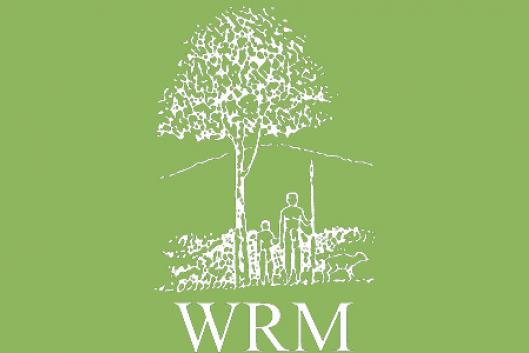Carbon forestry projects made a late start in the CDM market because they are so controversial. The necessary legal framework, laid out in the Marrakesh accords of 2001, was agreed only in late 2005 at the Montreal climate negotiations. So there is little concrete to point to yet.
But carbon forestry is definitely on the cards for India. The World Bank, forestry and other private sector interests, academics and the government are all busy laying plans and calculating wildly different figures for the carbon credits India could get from trees. In 2003, the Indian pulp and paper lobby issued a blueprint for ‘Re-Greening India’ as part of its longstanding campaign to be allowed to lease ‘degraded’ forest land on which to grow industrial plantations. The possibility of the plantations earning carbon credits was discussed in detail. A National Environment Policy Draft circulated by the Ministry of Environment and Forests (MoEF) in 2004 meanwhile confirms a new, ‘liberalised’ environmental policy that promotes carbon trading and other environmental services trades. The move towards carbon forestry also chimes with a grandiose existing plan on the part of the MoEF to bring 30 million hectares of ‘degraded’ forest and other lands under industrial tree and cash crop plantation by 2020, through a new type of collaboration with the private sector, state governments and local communities.
Among the scores of CDM projects being contemplated for India are forestry projects in Madhya Pradesh and Andhra Pradesh states. Here, an organisation called Community Forestry International (CFI) has been surveying opportunities for using trees to soak up carbon. CFI declares that it helps ‘policy makers, development agencies, NGOs, and professional foresters create the legal instruments, human resource capacities, and negotiation processes and methods to support resident resource managers’ in stabilising and regenerating forests. Its work in Madhya Pradesh has been supported by the US Agency for International Development and the US Department of Agriculture’s Forest Service, and in Andhra Pradesh, by the Climate Change and Energy Division of Canada’s Department of Foreign Affairs and International Trade.
CFI suggests that, in India, the CDM would be a viable income generating activity for rural indigenous communities. But there are strong reasons to doubt this. In India, as everywhere else, it’s not abstract theory, but rather the institutional structure into which CDM would fit, that provides the key clues to its likely social and climate outcomes.
Take, for example, the CDM scheme investigated by CFI that would be sited in Adilabad, Andhra Pradesh state. CFI saw possibilities of sequestering carbon by reforesting and afforesting non-forest or ‘degraded’ forest lands whose carbon content has been depleted by a large and growing human and cattle population, uncontrolled grazing of cattle in forests and ‘encroachment’ on and conversion of forest lands for swidden cultivation.
The best option, CFI felt, would be to regenerate teak and mixed deciduous forests. Clonal eucalyptus plantations would, it thought, accumulate carbon faster, and would have other commercial uses such as timber and pulp, as well as incremental returns for any interested investor, but would cost more to establish and maintain, and would be sure to be condemned by Adivasi communities and activists as a new form of colonialism.
CFI decided that the best agencies for taking on forest regeneration would be women’s self-help groups (SHGs). SHGs were set up by the state-level Inter-Tribal Development Agency during the 1990s as a mechanism for improving the finances of households through micro-credit schemes and capacity-building, as well as linking households with financial institutions and government authorities. CFI says that they’re much more dynamic, accountable and transparent than other local institutions, such as forest protection committees, which are viewed as inefficient, untransparent, untrustworthy, and troubled in their relationship with the Forest Department.
It may sound perfect. Except that it’s hard to see how the virtues of the women’s self-help groups could work for the carbon economy. For one thing, CFI states that only if the SHGs come together in a federation would carbon offset forestry projects be financially viable, given the high transaction costs involved in preparing and carrying them out. Yet it does not explain how such a federation could come about in rural communities, nor how SHGs could become involved in CDM projects and link themselves to the carbon market. Nor does it mention that SHGs currently work in relative isolation from the Panchayat Raj institutions (the ultimate village-level formal self-governing authority in rural India), the Forest Department and local forest protection committees.
It could be argued that there’s nothing to worry about yet and maybe we can just learn as we go along. But the problem is that the mere fact that studies like CFI’s are being carried out already gives legitimacy to the idea of carbon offsets in the South. Few outsiders will notice that the conclusions are suspect.
Excerpted and adapted from: “Carbon Trading: A Critical Conversation on Climate Change, Privatisation and Power”, Dag Hammarskjold Foundation, Durban Group for Climate Justice, and The Corner House, available for download at http://www.dhf.uu.se
